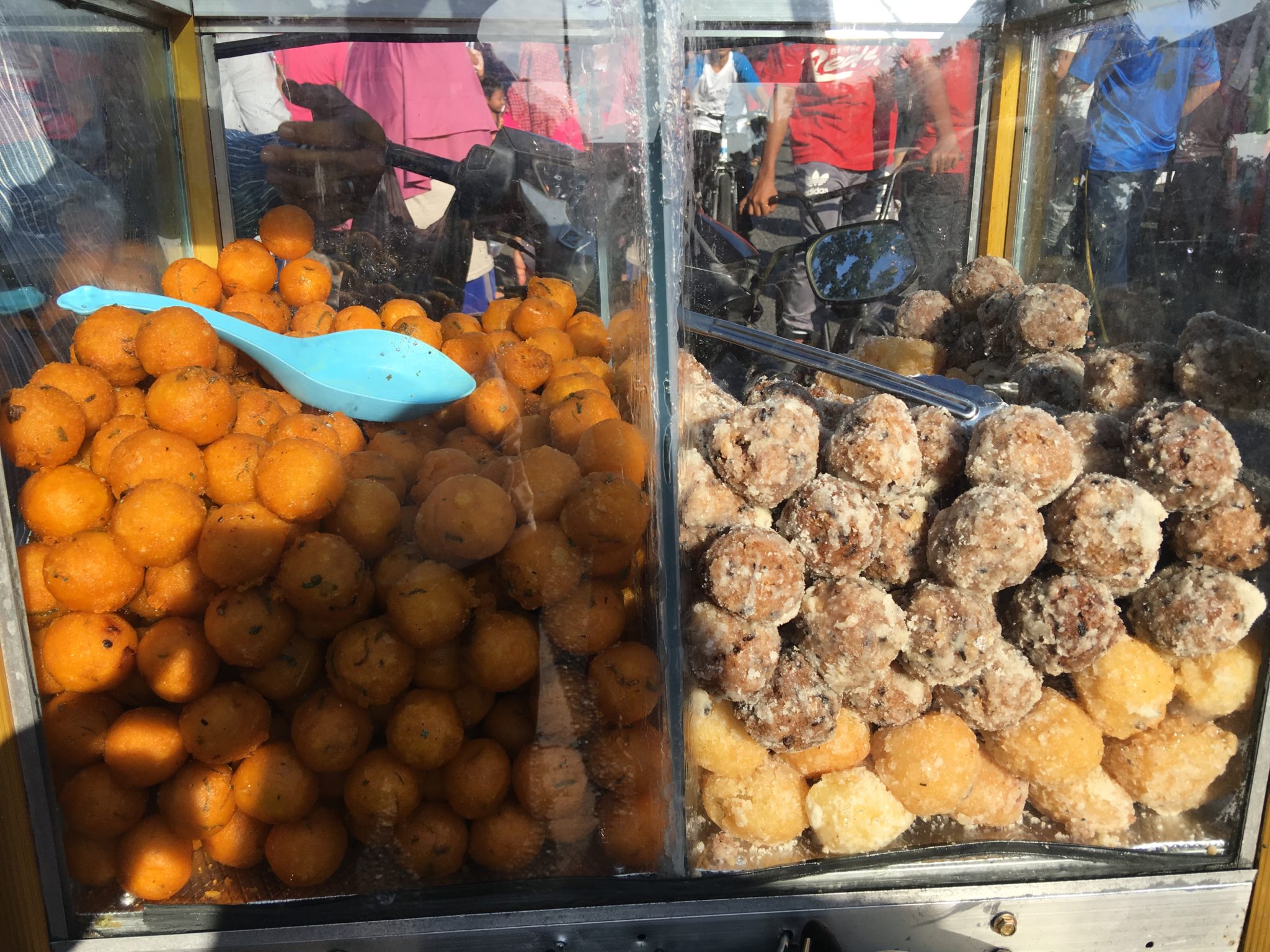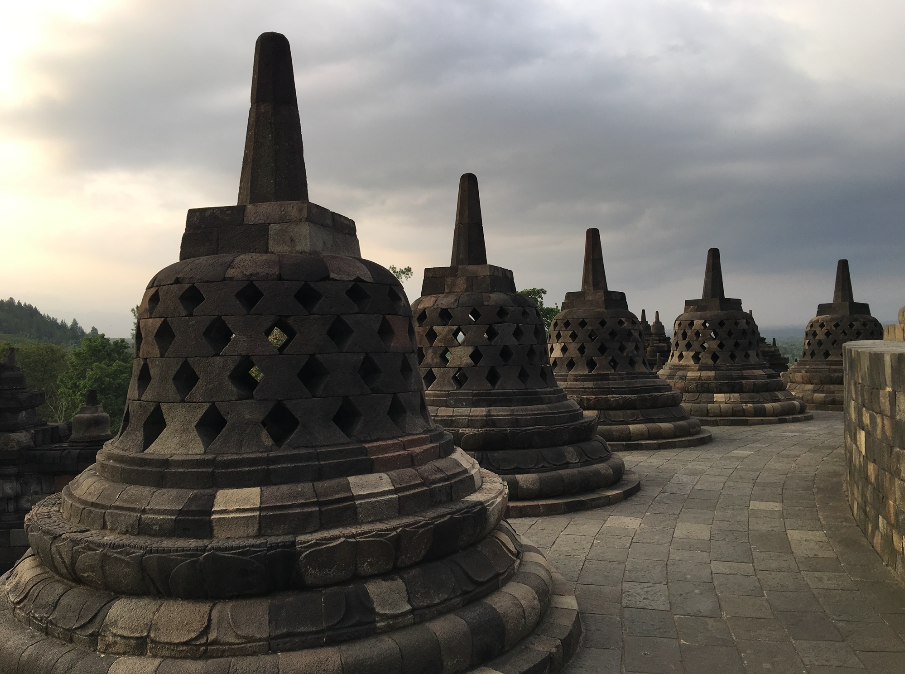
At the Pasar Bawah, the undercover market of Pekanbaru, baskets are piled ceiling high with the spices and other flavours that make up the local Padang cuisine famous to West Sumatra: ginger, galangal, turmeric, lemongrass, cassava chips, garlic, shallots, shrimp and chilli. Together, they spice up the most iconic dishes of masakan padang: rendang daging or ayam (beef and chicken dishes); gulai ayam (chicken curry); asam pedas (sour and spicy fish stew); ayam bakar (grilled spicy chicken); and gulai kepala ikan (a fish head curry made with red snapper).

On top of the feast of Padang flavours on offer, Pekanbaru is a culinary crossroads shaped by Malay culture and ocean migrations. Located on the Siak River, which drains into the Straits of Malacca, its name pekan (market) and baru (town) links to its past as a trading port. Typically served as a banquet, a Padang spread – with its peacock-plume coloured diversity of dishes – reflects the vivid culture of the Minangkabau people, who are West Sumatra’s largest ethnic group.

Considered one of the best cuisines not only in Indonesia, but also in the world, restaurants all the way from Jakarta to New Zealand flaunt Padang specialties. Best known is the ubiquitous nasi padang – steamed rice served with a multitude of ‘Padangnese’ side dishes. These dishes can be sampled at the rumah makan padang restaurants, as well as cafes and stalls set up around the city. Some display the dishes up front, piled high in the windows. In Pekanbaru, as throughout West Sumatra, it is common to get stuck into Padang or Minangkabau cuisine with your hands – and to make a feast of it.
Eating Padang style also means watching the spectacle of waiters navigating through tables with a mountain of precisely stacked white platters on their arms. Try the food at Pondok Patin H.M Yunos or in the town centre at Pondok Asam Pedas Baung.
As with all Malay cultures, from Kuala Lumpur to Singapore, sambal (a red chilli-based condiment) reigns supreme. Eat it with barbecued satay, whole grilled ikan (fish) and ayam bakar (charcoal grilled chicken) as you wander the markets and food stalls. Pyramid-shaped ketupat, coconut-leaf wrapped rice cakes, are served with boiled egg, cassava chips and spicy soup, or with beef rendang.
The Chinese-Malay influence also translates into the sweets and soups on offer in Pekanbaru. At bustling open-fronted kopitiam (coffee shops), tuck into kaya toast (coconut jam) and sweet kopi susu (white coffee) for breakfast, finished off with glutinous Nyonya cakes, which are tinted pandan plant green.

A little bit off centre, but well worth the distance, Nasi Ampera Ajor in Jalan Delima serves up mee soto ayam (chicken noodle soup) and other mee – noodle soups, such as laksa, that are common to Singapore, Malaysia and Indonesia.
But, it is the Malay style ikan bakar (grilled fish) that really draws the crowds in. A mix of spices is used before grilling the fish, which adds fuel to the flavour. Many of these typical Chinese and Malay dishes have migrated to both sides of the strait, with just small variations in spelling.

The Pasar Bawah market is also one of the best places to see Pekanbaru’s cultures in action, with its medley of carpets and clothes, household goods, food and fruits. Rainbow-toned lanterns, batiks and silk, Muslim headdress, gilded vases and lion statues collide in a truly bazaar atmosphere, creating an experience as pungent and uplifting as the Padang food is in taste.


